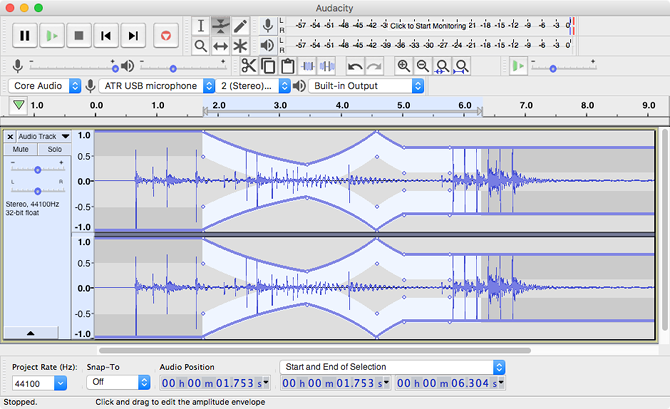In the world of music, having access to some of the best digital audio workstations is very crucial. Two such amazing digital studios are Audacity. Learn More About Audacity. If you haven't downloaded Audacity yet, you can find it here: Audacity Download. And, if you are keen to learn everything there is to know about podcast editing, check out the Audacity Podcast Production video course. That's just one of the many courses you'll find in The Podcast Host Academy.On top of that we run an active community and regular live Q&A sessions. This set of tutorials provide a guide to making your first microphone, guitar or keyboard recording with Audacity. The Tutorials This tutorial has been broken into several sub-tutorials for ease of reading as there is a lot of material to read and digest. By strict definition, yes Audacity is a DAW (digital audio workstation) as it is audio software capable of recording, editing and producing audio files. However, due to it being fairly basic it is better described as a simple audio editor. 12 Creative Uses for Audacity: Podcasts, Voiceovers, Ringtones, and More. Audacity isn't just useful for podcasts and music production. Here are some creative ways to use Audacity and how to get started.
Time capsule ssd. Audacity recording software is an audio program that can be downloaded for free from the internet, and already has a download rate numbering in the millions. It's a very basic program Test divx player. and isn't really designed for any serious music production, but it can be used quite effectively to quickly capture basic ideas and recordings.
The program is known as being an ‘open-source‘ program – this means that anyone can view the program's code and use it however they wish.
Available for both Windows and Mac systems (as well as Linux systems), Audacity allows you to record and edit audio in much the same way as any other DAW program. It also has multitrack capabilities for both recording and playback.
Audacity Features
Audacity audio software supports sample rates of up to 192 kHz and bit depths of up to 24 bits, during both recording and playback. Audio can be exported as WAVor MP3, amongst other formats, and the program can be used with any audio interface or sound card to capture microphone and instrument signals.
Audacity does have major limitations that stop it from reaching the levels of a professional audio program. One of these is the lack of support for both MIDI and VST instruments. But VST effects can be used on Windows systems and Audio Unit effects are supported on Mac systems.

Audacity also contains its own built-in processors and effects, some of which include:
- noise removal
- pitch-shifting
- echo
- phaser
- time-stretching
- reversing

Audacity also contains its own built-in processors and effects, some of which include:
- noise removal
- pitch-shifting
- echo
- phaser
- time-stretching
- reversing
Other Uses
I have heard that Audacity recording software is popular amongst actors when they need to record themselves in order to learn dialog, and also for those learning to speak different languages. It's also commonly used to capture and digitize recordings from old cassette tapes or vinyl records.
Podcasting is another area where Audacity shows itself to be useful. The simple and basic nature of the program is ideally suited to the creation of a podcast.
Audacity Music Production
Audacity autotune plugin. There are plenty of useful tutorials available on the Audacity website, covering all of the possible applications of the program.
Final Thoughts
I've never really been a big fan of Audacity, mainly due to the lack of any meaningful features that would make it useful for any kind of creative music production. But I can understand why it's used in certain situations, such as in podcasting or just as a way to record musical ideas and demos.
The fact that Audacity recording software (the link takes you to the official site) is free means that it may have its uses in a home recording studio as well.

